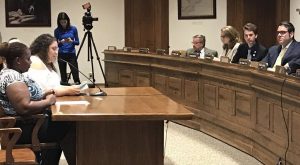by Matt Braman, McCormack Graduate School student
 With “fake news” attracting so much attention in the past year, I’ve found myself questioning my own news sources much more often. While I consider this to be a normal response in an unpredictable political climate, it has also led me to consider some of the other, more subtle, ways in which news presentation might misinform us. For example, how biased is our news media currently? And if our media are biased, how does that affect our understanding of current events?
With “fake news” attracting so much attention in the past year, I’ve found myself questioning my own news sources much more often. While I consider this to be a normal response in an unpredictable political climate, it has also led me to consider some of the other, more subtle, ways in which news presentation might misinform us. For example, how biased is our news media currently? And if our media are biased, how does that affect our understanding of current events?
Much of the research in this area finds that while people do frequently detect bias in news reporting, often their conclusions are unsubstantiated (Baum and Groeling, 2008; Lin, Haridakis, & Hanson, 2016). In what has been coined the “hostile media” phenomenon, individuals from completely opposite ends of the political spectrum often perceive bias from the same source, even when it is objectively considered to be “relatively balanced and non-partisan” (Vallone et al., 1985 as cited in Groeling, 2013). Unsurprisingly, this not only makes detecting bias in the media difficult, but also makes attributing such bias to journalistic intent even more challenging (Baum and Groeling, 2008). Continue Reading →




